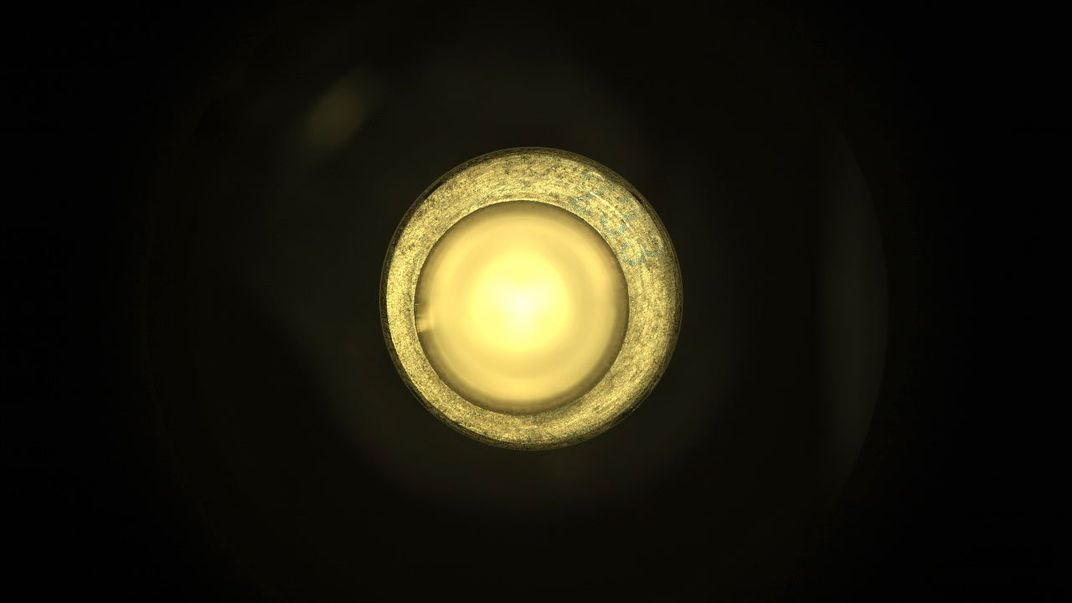Perseverance Rover’s First Martian Rock Sample Goes Missing
Engineers are working to solve the mystery using data about the sample that the space robot sent back to Earth
/https://tf-cmsv2-smithsonianmag-media.s3.amazonaws.com/filer/f9/eb/f9eb406e-91aa-44d4-8e47-1eab262e8f26/2-pia24742_mars_perseverance_ccf-16width-1280.jpg)
Since the Perseverance rover’s historic landing on Mars, it has achieved various milestones—from aiding NASA’s Ingenuity helicopter in completing the first-ever powered controlled flight on another planet to extracting oxygen from the Red Planet’s atmosphere.
On August 6, the rover drilled into the Jezero Crater for Martian rock samples that would later be sent back to Earth. Cameras aboard the rover photographed the event, and images sent back to Earth showed evidence of a small dust hill gathered neatly around a hole.
However, when NASA scientists analyzed the data from the drilling experiment, they found that the rock sample never made it into the rover’s sampling tube, reports Mike Wall for Space.com.
“While this is not the hole-in-one we hoped for, there is always risk with breaking new ground,” says Thomas Zurbuchen, associate administrator of NASA’s Science Mission Directorate, in a statement. “I’m confident we have the right team working this, and we will persevere toward a solution to ensure future success.”
Engineers are still trying to piece together what happened using data the rover beamed back to Earth. Perseverance has a seven-foot-long arm with a hollow coring bit and percussive drill at its end. When researchers analyzed the data, they found that the drill and collection tube worked as intended, reports Nicole Karlis for Salon.
A response team will use a tool called the Wide-Angle Topographic Sensor for Operations and eNgineering (WATSON) imager, located at the end of the rover’s robotic arm, to peer into the hole Perseverance drilled in the Martian soil.
Some engineers suspect the issue may not lie with the rover but possibly with the properties of the rock sample itself, Jonathan Amos for the BBC reports.

“The initial thinking is that the empty tube is more likely a result of the rock target not reacting the way we expected during coring, and less likely a hardware issue with the Sampling and Caching System,” says Jennifer Trosper, NASA JPL’s Perseverance project manager, in a statement. “Over the next few days, the team will be spending more time analyzing the data we have and also acquiring some additional diagnostic data to support understanding the root cause for the empty tube.”
Perseverance is carrying a total of 43 sampling tubes, and at least 20 tubes will be used for collecting material extracted from Mars’ surface, per Space.com. This project is not the first time NASA researchers encountered issues with collecting samples on Mars. In 2008, NASA’s Phoenix Mars Lander tried to scoop up a sample of frozen Martian soil into one of its onboard samples, but it stuck to the inside of the lander’s scoop, Salon reports. The Curiosity rover also ran into some issues as it tried to drill rocks that were either too hard or too brittle than engineers had planned for, Space.com reports.
One of the Perseverance rover’s key objectives is to be the first rover to collect and cache Martian soil samples—and search for signs of ancient life on Mars. In collaboration with NASA and the European Space Agency, future missions will collect the sealed samples from Mars and return them to laboratories on Earth for analysis by 2031, Space.com reports.
/https://tf-cmsv2-smithsonianmag-media.s3.amazonaws.com/accounts/headshot/gamillo007710829-005_0.png)
/https://tf-cmsv2-smithsonianmag-media.s3.amazonaws.com/accounts/headshot/gamillo007710829-005_0.png)